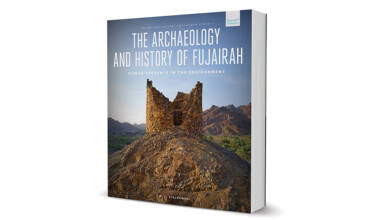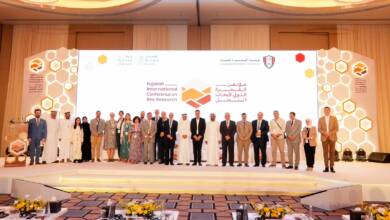Name of Monument: Mosque of the Three Doors
Also known as: Ibn Khayrun Mosque
Location: Kairouan, Tunisia
Date of Monument: Hegira 252 / AD 866
Period / Dynasty: Aghlabid
Patron(s): Muhammad ibn Khayrun.
History: Built in 252 / 866, the mosque was restored and the minaret was added in 844 / 1440.
Description:
The Ibn Khayrun or Mosque of the Three Doors has the oldest sculpted and decorated façade in Islamic art and includes the whole Kairouanese decorative repertoire of the Aghlabid period.
The use of soft, sculpted stone over the entire surface creates a truly magnificent effect.
The façade is based on a symmetrical panel of three horseshoe arches of dressed stone supported by columns and capitals reclaimed from antiquity.
The central arch is larger than the other two. The spandrels are decorated with lively vine-leaf scrolls similar to those painted on the half-dome of the mihrab in the Great Mosque.
Above these are four string-courses of rectangular stones. The lower course has a kufic inscription that testifies to the fact that the mosque was restored during the Hafsid period.
There are two further courses of calligraphy divided by a course containing a floral frieze. The kufic writing is in relief and the uprights of the letters are chamfered.
The decorator has added small plant motifs to fill the spaces, pre-empting the floral kufic style of the late AH 4th century (AD 10th). The inscription contains several verses from the Qur’an and names the founder and the foundation date.
The central string-course is decorated with a variety of carved stone squares, using designs taken from the Aghlabid repertoire.
They include eight-branched rosettes with five-lobed palm motifs or with semi-florets, star-shaped flowers with eight petals and alignments of stylised, open or closed flowers. The top of this harmonious façade is finished with a cornice of stone corbels which are very similar to those found at the Great Mosque.
At the corner of the mosque rises a minaret added during the Hafsid period. It has a rectangular base, in the Kairouanese manner, and the gemel windows are framed with ceramic tiles, betraying the influence of al-Andalus.
The mosque itself is small. There are three naves parallel to the qibla wall. Each of the two columns supporting the ceiling is surmounted by semi-circular horseshoe arches.
The Mosque of Three Doors has the oldest sculpted and decorated façade in the history of Islamic art and constitutes an inventory of the decorative repertoire of Kairouan during the Aghlabid period.
The façade is arranged symmetrically around a central axis and has three doorways. The kufic inscription that crowns it attributes its foundation to Muhammad ibn Khayrun.
The mosque itself is small. The minaret, added under the Hafsids, is decorated with gemelled openings framed with earthenware tiles, which reveal influences of al-Andalus origin.
How Monument was dated:
The 8th- / 14th-century historian from al-Andalus, Idhari, records that Muhammad ibn Khayrun built a mosque in 252 / 866.
This is confirmed by the damaged inscription on the façade, which only shows the first figure (2) of the date 252. The restorations of the 9th / 14th centuries are mentioned in an inscription running the whole length of the central part of the façade.
Selected bibliography:
Golvin, L., Essai sur l’architecture religieuse musulmane, t.3, Paris, 1974, pp.190 – 191, 251–5.
Maoudoud, K., Kairouan, Tunis, 1991, pp.45–6.
Marçais, G., L’art musulman, Paris, 1962, pp.36–7.
Ifriqiya: Thirteen centuries of Art and Architecture in Tunisia, pp.212–14.
Citation of this web page:
Saloua Zangar “Mosque of the Three Doors” in Discover Islamic Art, Museum With No Frontiers, 2020. 2020. http://islamicart.museumwnf.org/database_item.php?id=monument;isl;tn;mon01;26;en




